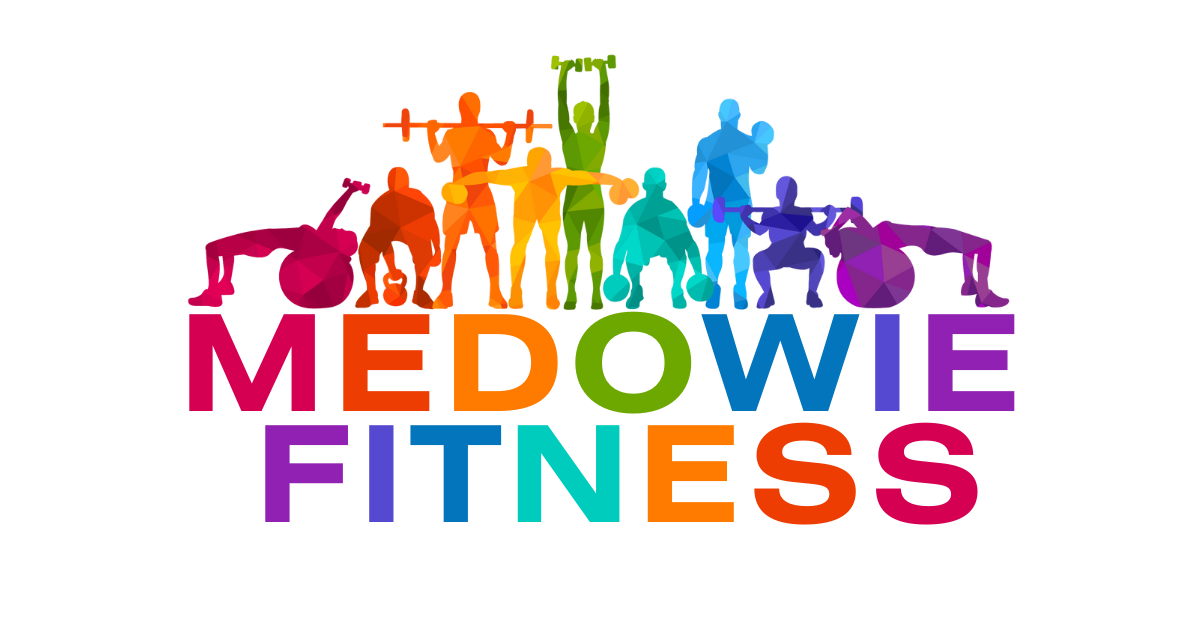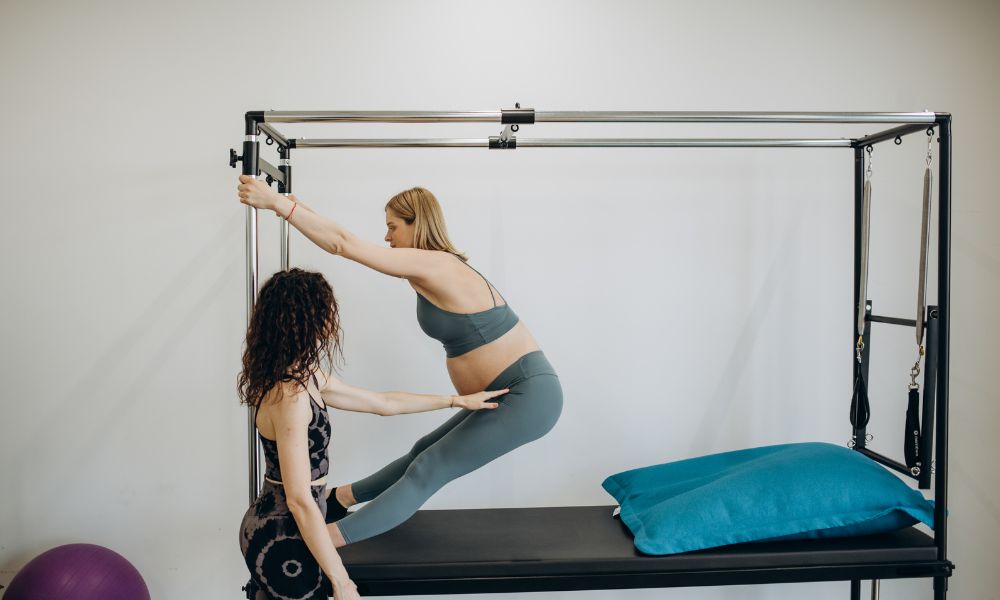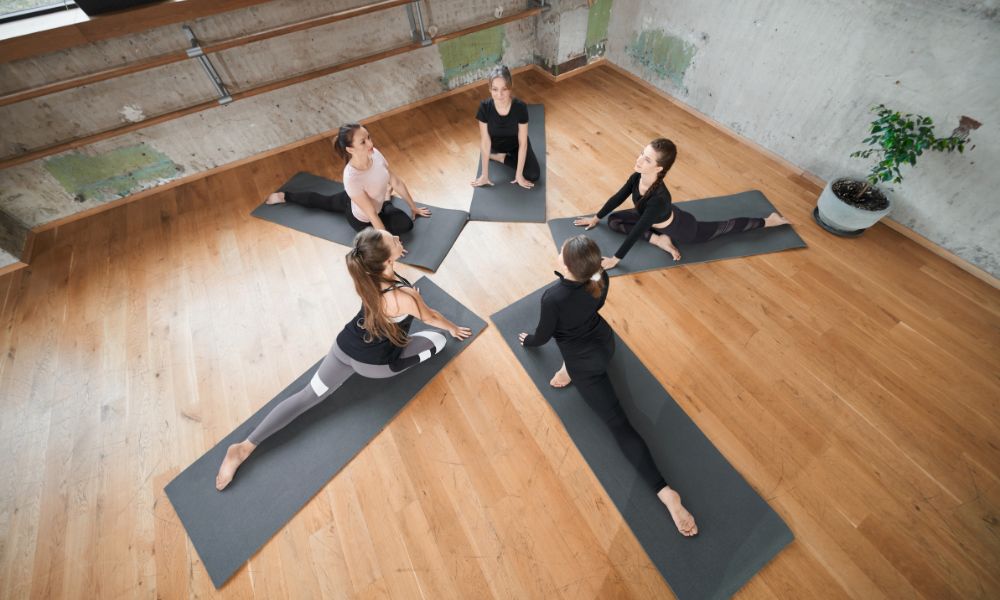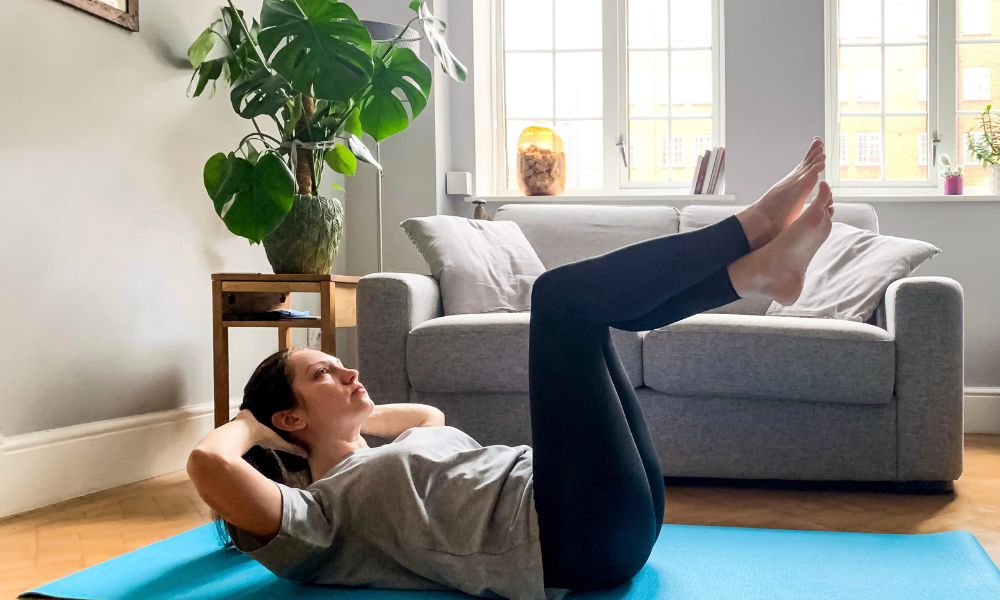Navigating the fine line between keeping active and staying safe during pregnancy can feel a bit like walking a tightrope. It’s no surprise then that many mums-to-be are on the hunt for exercise options that are not only brilliant for their health but also gentle on the bub.
And you’re definitely not alone in this search – it’s a common quest amongst expectant mothers far and wide, including right here down under.
In this whirlwind of information, Pilates stands out as an exceptional choice. It offers workouts that are both soft and effective, tailored meticulously to cater to each phase of your pregnancy journey.
After pouring over countless pieces of research, we’ve pieced together insights into how Pilates can be your ally through motherhood, ensuring safety every step of the way. This blog post is dedicated to guiding you towards safe Pilates practices specifically fashioned for expecting mums.
From unravelling the benefits to uncovering appropriate exercises for each trimester, we’re here to make sure you’re well-equipped.
So brace yourself to feel more capable and confident!
Key Takeaways
- Pilates during pregnancy strengthens the pelvic floor muscles, improves posture, and helps with easier birth and faster recovery.
- Always listen to your body while exercising and stop if you feel dizziness, shortness of breath or any discomfort. Avoid lying on your back after the first trimester.
- Exercises like pelvic tilts, cat stretch, and modified upper back stretches are safe throughout all trimesters of pregnancy.
- Include exercises that target multiple muscle groups such as the sword, sword arm, and wagging the tail for a balanced workout.
- Be careful with using heavy springs in Pilates equipment during pregnancy and steer clear from excessive leg and arm work to avoid strain.
Is Pilates Safe During Pregnancy?
Pilates can be a safe and effective form of exercise during pregnancy, offering benefits such as improved strength and flexibility. Expectant mothers should be aware of precautions and signs that indicate they should
stop exercising.
Benefits of Pilates during pregnancy
Practising Pilates during pregnancy brings several key benefits. It helps strengthen the pelvic floor muscles, which support the bladder, bowel, and uterus. Strong pelvic muscles lead to an easier birth and faster recovery after delivery.
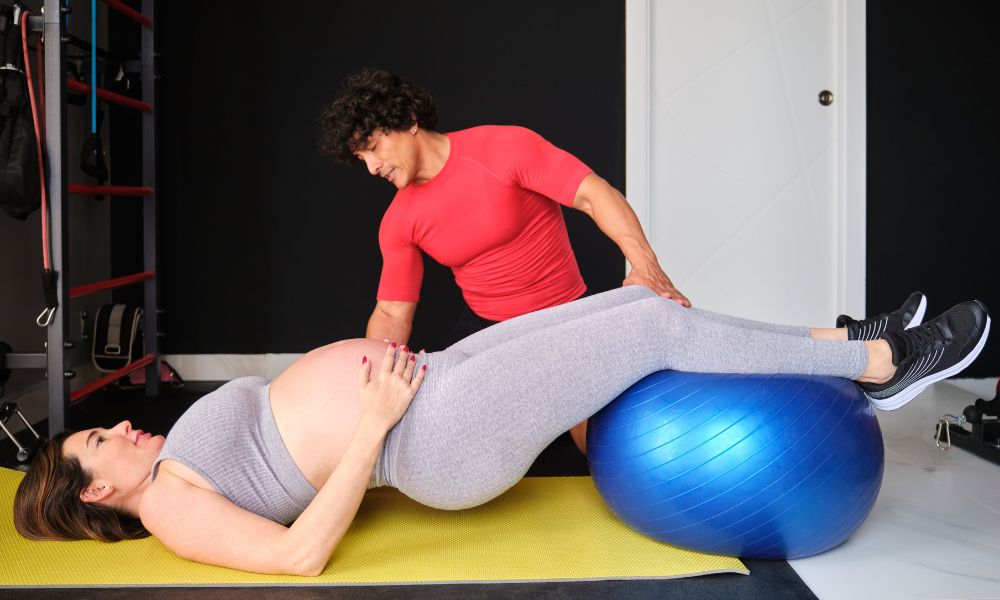
Pilates also improves posture by strengthening core muscles. Better posture lessens back pain, a common issue for expectant mothers.
These exercises boost circulation, reducing swelling in the legs and feet. They teach you how to relax and control your breathing, preparing you for labour. Engaging in prenatal Pilates ensures a safe workout that keeps you fit without putting too much strain on your body or baby.
It’s a smart choice for maintaining fitness while nurturing new life inside you.
Precautions and signs to stop exercising
Listen to your body and stop exercising immediately if you experience dizziness, breathlessness, chest pain, headache, vaginal bleeding, calf pain or swelling. Seek medical advice urgently if you have contractions that keep coming or any leakage of amniotic fluid.
It is essential to monitor your heart rate during workouts and avoid lying flat on your back after the first trimester to prevent compressed blood flow returning to your heart.
Pregnancy demands extra caution in exercising; thus, it’s crucial to recognise these signs promptly. Our next section will elaborate on 9 Antenatal Pilates Exercises Suitable for All Trimesters”.
9 Prenatal Pilates Exercises Suitable for All Trimesters
Get ready to strengthen your pelvic floor muscles, engage in deep tummy strengthening, and perform pelvic tilts for stability. You can also try modified upper back stretches, cat stretches, and thigh stretches that are
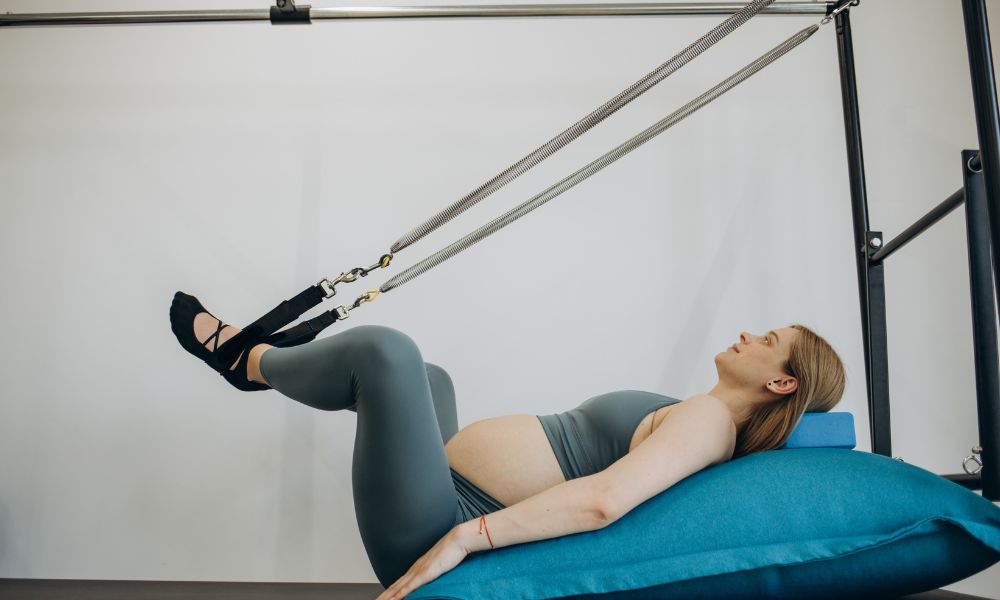
safe throughout pregnancy.
Finally, introduce the sword, sword arm, and wagging the tail exercises into your prenatal Pilates routine for a balanced workout.
Pelvic floor muscle exercises
Pelvic floor muscle exercises are essential for
pregnant women. These exercises help in preventing urinary incontinence and support the pelvic organs.
To do Kegels, simply tighten your pelvic floor muscles for 5 seconds, then relax for 5 seconds; aim for 10-15 repetitions several times a day.
Incorporating this into your prenatal Pilates routine can enhance core stability and prepare you for childbirth.
Engage in these exercises regularly to strengthen these crucial muscles throughout pregnancy. Strengthening the pelvic floor can assist with labor and postpartum recovery, promoting overall well-being as you progress through each trimester.
Deep tummy strengthening
During pregnancy, maintaining strong core muscles is important. Deep tummy strengthening exercises are gentle and beneficial for expectant mothers. These exercises focus on engaging the deep abdominal muscles to support your growing bump and maintain good posture.
They also help prepare you for labour and delivery by promoting better control over your breathing and pushing efforts. Incorporating deep tummy strengthening into your prenatal Pilates routine can contribute to a more comfortable pregnancy experience while improving overall strength and stability in a safe manner.
Pelvic tilts
Pelvic tilts are gentle exercises that help to strengthen your abdominal muscles and ease back pain. Lie on your back with knees bent, then tilt your pelvis upward, pressing your lower back into the floor.
Hold for a few seconds before releasing. This exercise can aid in maintaining pelvic alignment and supporting the lower back during pregnancy without causing strain.
Modified upper back stretch
The modified upper back stretch is an excellent exercise for releasing tension and improving posture during pregnancy. Sit comfortably on the floor with your legs crossed and your hands interlaced behind your head.
Gently arch your upper back, opening up the chest while keeping the lower back stable. Hold this position for a few breaths, feeling the gentle stretch through your upper back and shoulders.
This exercise helps relieve common discomforts associated with pregnancy such as tightness in the upper body.
Cat stretch
Transitioning from the modified upper back stretch, we move on to the cat stretch. The cat stretch helps in stretching and releasing tension in your back muscles while also strengthening your abdominal muscles.
Begin on your hands and knees, with a neutral spine. Inhale as you arch your back up towards the ceiling, tucking your chin to your chest, then exhale as you release and lift your head and tailbone upwards.
The cat stretch is beneficial for pregnant women as it helps alleviate back pain by gently stretching and mobilising the spine. It also encourages flexibility in the torso which can assist during labour.
Thigh stretch
To perform the thigh stretch, start by sitting at the edge of a chair with your back straight. Extend one leg in front of you, keeping the heel on the ground and toes pointing upwards.
Gently lean forward from your hips to feel a stretch along the back of your extended leg. Hold for 20-30 seconds and then switch sides. This exercise helps maintain flexibility in your hamstrings and can alleviate any tension or discomfort in your thighs.
The sword
Transitioning from the previous topic of “Thigh stretch” to the upcoming “The sword,” it’s essential to understand this antenatal Pilates exercise. The sword is a gentle movement that involves extending one arm forward while holding onto the spring bar, promoting upper body strength and stability during pregnancy.
This exercise supports the development of strong and balanced muscles, providing expecting mothers with a safe and effective way to maintain fitness throughout their pregnancy journey.
During pregnancy, engaging in controlled movements like the sword can help strengthen your upper body without putting strain on your abdomen or back. By incorporating the sword into your antenatal Pilates routine, you can improve posture and build core strength while minimising impact on your joints – all crucial aspects of maintaining overall wellness during each trimester.
Sword arm
Transitioning from the sword exercise, we now look at the sword arm movement. Keeping your body stable and engaged, extend one arm forward while holding onto the Pilates ring with both hands.
Slowly rotate your upper body to each side while maintaining a strong core and controlled breathing. This exercise helps improve upper body strength and stability as well as enhances overall muscle tone, making it beneficial for expectant mothers seeking safe yet effective prenatal exercises.
Wagging the tail
As part of your prenatal Pilates routine, “Wagging the Tail” is a beneficial exercise for strengthening your back and improving flexibility. To perform this exercise, start on your hands and knees with a neutral spine.
Inhale as you tilt your pelvis to one side while lifting the corresponding leg out to the side, keeping it in line with your body. Exhale as you bring the knee back in line with the body and repeat on the other side.This movement resembles a dog wagging its tail – hence the name! “Wagging the Tail” helps maintain stability in your pelvis and lower back, which is especially important during pregnancy.
This gentle exercise targets multiple muscle groups, including those in your hips and lower back. It promotes flexibility and strength without placing excessive strain on your body during pregnancy.
Pilates Modifications and Exercises to Avoid During Pregnancy
During pregnancy, be cautious with working heavier springs and avoid leg and arm work that may strain the
body.
Working with heavier springs
When using heavier springs in Pilates during pregnancy, focus on maintaining proper form and avoid overexertion. Consider lighter resistance to prevent strain and ensure safety for you and your baby.
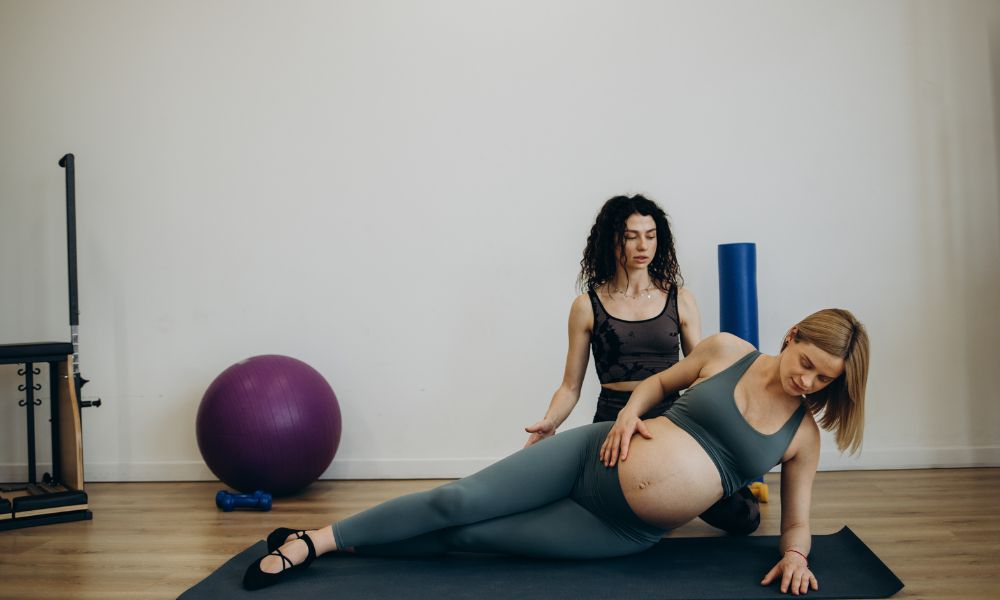
Adjust the equipment settings as needed to suit your comfort level, prioritising gentle movements while still engaging the targeted muscle groups. Keep the pace steady without rushing through the exercises, allowing for controlled motions that support your changing body.
It’s important to listen to your body and consult with a prenatal fitness professional about suitable modifications for an optimal workout experience.
Avoiding leg and arm work
When doing Pilates during pregnancy, it’s important to avoid exercises that require heavy use of your legs and arms. This includes movements like leg presses, deep squats, or using heavy springs on the reformer.
These exercises can put unnecessary pressure on your abdomen and pelvic floor, which is not ideal during pregnancy. Instead, focus on gentle and controlled movements that engage your core muscles without straining your limbs.
By avoiding excessive leg and arm work, you can ensure a safer and more comfortable prenatal Pilates experience.
Nurture Your Body and Baby – Join Our Pilates Class
Pregnancy Pilates offers safe and effective exercises throughout all trimesters. The outlined prenatal Pilates exercises provide practicality and efficiency for expectant mothers. Emphasising the importance of these strategies, their impact leads to significant improvements in pregnancy fitness.
For further engagement, I encourage exploring additional resources or services related to maternity Pilates. Take action today by embracing the benefits of Pregnancy Pilates for a healthier journey into motherhood!
